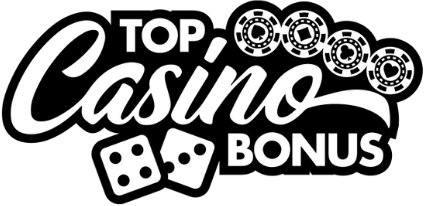Three Card poker: how to play and win
You’d be surprised how often players stroll up to a Three Card Poker table thinking they’re sitting down for a casual round of glorified blackjack. They’ll toss chips without a clue, fold when they shouldn’t, and chase payouts on sucker bets. It’s no wonder the house rarely breaks a sweat. But if you’ve got a good head on your shoulders and a desire to learn, it’s one of the most beatable games in the casino, provided you know the ropes.
Table of contents
Understanding the Three Card Poker layout
Now this game isn’t a variant of Texas Hold’em or Omaha, get that out of your head early. It’s played against the dealer, not other players, which means your strategy is locked in once the cards hit the table. You’re dealt three cards face down, the dealer gets three, and you both aim for the best hand. But here’s the twist: traditional hand rankings get scaled down. A straight outranks a flush. Why? Probability. With three cards, a flush is easier to come by than a straight.
Know the bets: ante, play, and pair plus
The ante is your ticket to play. You put that up, and if your hand’s good enough, you press forward with the Play bet. If not, you fold and forfeit that ante. The Play bet must equal the ante, a detail many novices overlook, fumbling with their chips like it’s optional. Then there’s the Pair Plus. That one’s a side bet, where you’re betting on the quality of your hand, not whether it beats the dealer. It pays based on hand strength, and while it can juice your session, it’s also where casinos make their money off dreamers.
Fundamentals of strategy, don’t fold too fast
There’s one cardinal rule when it comes to strategy: never fold a Queen-6-4 or better. Anything lower? Fold. It’s not emotional. It’s math. Based on long-form simulation and hand modeling, that’s the edge you need to outlast the house. It’s tested, tried, and absolutely ignored by most casual players who either play scared or chase rabbits.
Why Queen-6-4 matters
If you’ve got at least a Queen in your hand, your odds of beating the dealer’s qualifying hand, which requires a Queen or better, nearly balance out. Q-6-4 is the tipping point. You’re not playing for fireworks, you’re playing smart. Going in with less than that and you’re donating to the pit. Trust the statistics more than your gut here.
Avoid the sinking ship of sucker bets
Look, the Pair Plus can be tempting. It offers alluring payouts, 40 to 1 on a straight flush sounds juicy, right? But here’s the reality. The house edge jumps over 7% on average. That’s steep by poker standards. If you’re playing for fun, fine; but if you’re playing for keeps, steer clear or keep it light.
Payout structure tells the full story
Don’t just glance at the felt and make a decision. Evaluate your table’s specific pay structure. It matters, a lot. Payouts differ widely across casinos and online platforms. A good player always compares pay tables before committing. Casinos don’t highlight this info for your benefit. You’ve got to go looking for it.
Play the dealer, not the table
Bluffing or table reading has zero place here. Your choices are binary and based entirely on expected value. The dealer plays to a fixed rule: qualify with Queen or higher. If they don’t qualify, your ante wins even money and the Play bet pushes. So knowing this enables sharp decisions. You’re only maneuvering against a machine-like policy, not human psychology. Use that to your advantage.
Managing your bankroll like a pro
If you’re burning through your chips like it’s monopoly money, stop. Three Card Poker’s beauty lies in its steady pace, and a steady pace demands bankroll discipline. I’ve seen bankrolls melt in twenty minutes because players don’t segment funds. Allocate your total into 50–60 rounds. That’s your window to ride out variance and land a decent hand.
Leverage technology and safe methods
Whether you’re depositing into an online platform or cashing out, the banking method you choose sets the tone. I’ve always appreciated the no-nonsense simplicity of Neteller for its speed and reliability. Prefer not to share your card info directly? Plenty of seasoned players trust PayPal as a shield while funding sessions. And when anonymity is a must? Paysafecard still holds up as an old-school choice in a modern game.
Even the newer folks are jumping on Pay by Phone options, which make bankroll top-ups as quick as sending a text. Not my go-to, but I’ve seen it work for smoother mobile transitions. The bottom line? Choose what keeps your funds fluid but secure.
Reading the velocity of the game
Most players overlook rhythm. But tempo is critical. Know when the table’s running hot, when the dealer’s cycling through non-qualifying streaks, and when cards start clustering in patterns. Yeah, it’s anecdotal, but over decades, you notice these rhythms. Ride the momentum, and downshift when volatility spikes.
Learning from your own missteps
Start tracking your sessions. Even pencil and paper do the job. Record which hands you fold, which you play, and how those outcomes align with optimal strategy. After about 200 rounds, patterns emerge, not in wins and losses, but in discipline lapses. That’s what separates strong players from gamblers with lucky spurts.
My own lesson from early days
I once burned through 30% of a bankroll chasing Pair Plus in a Vegas room on Fremont. Straight flush never came, and by the time I realized the trap, I’d already fed the machine. From then on, I stuck to ante-play only, and saw consistency return.
The deeper truth of Three Card Poker
This game doesn’t reward flash. It rewards restraint. Steady hands and sharper minds turn profit over time. The secret? Make fewer wrong decisions than the person next to you. Don’t try to outthink the dealer, follow rules, respect the math, and let mediocrity eliminate itself from the table.
In a world hooked on high-octane, high-volatility games, Three Card Poker remains one of the last few relics where patience isn’t just virtue, it’s a weapon. Master it, and you’ll walk past empty pockets with your bankroll intact, and maybe a few dollars richer.





0 Comments